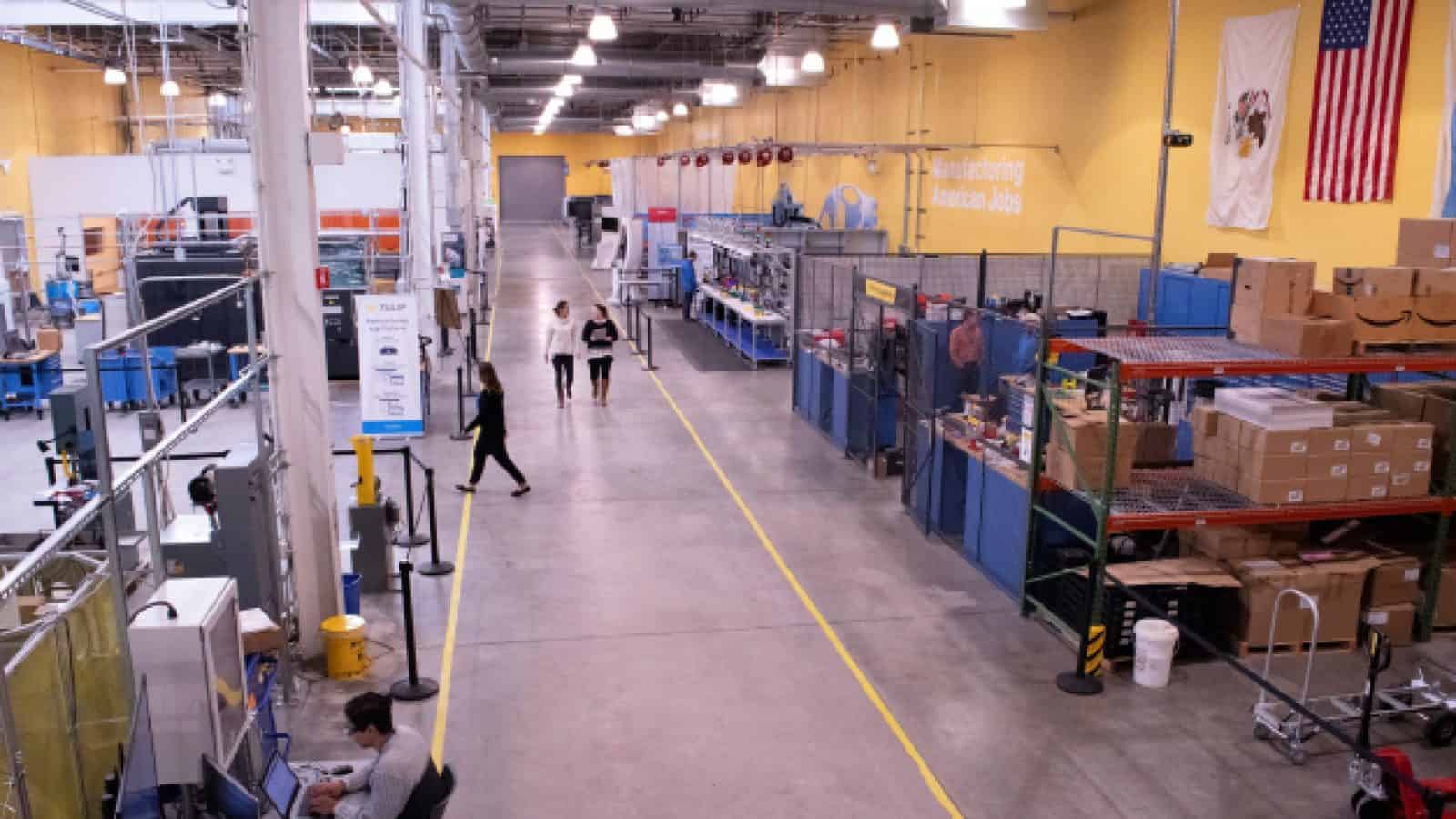Empower Your Workforce with Generative AI

Generative AI is increasing the potential for data to fundamentally change the way manufacturers operate throughout the manufacturing value chain — and bring significant value for the workforce.

TAKEAWAYS:
● Data currently is seriously underused at the operational level, leading to wasted potential for performance improvement.
● GenAI can empower worker efficiency and effectiveness — if they use it correctly. The key is focusing on how AI can augment workers’ expertise and make them more efficient and productive.
● Most manufacturers don’t collect and retain the data needed to benefit from AI. This is a good place to start.
In the Manufacturing Leadership Council’s study, Manufacturers Go All-In on AI (October 2023), nearly half of executives cited AI/machine learning (ML) as the technology they expect to have the most future impact on manufacturing operations — more than any other mentioned. Almost half — 47% — expect it to be a game changer by 2030. In Rockwell Automation’s State of Smart Manufacturing Report, generative AI was the No. 1 area for technology investment in the next 12 months, and 83% of those polled anticipate using it in 2024.
West Monroe’s survey of mid-sized manufacturers, The State of Manufacturing, shows companies are realizing the benefits from AI and ML, and increasingly infusing data into their operations. But one finding stood out: While 84% of companies surveyed use data extensively for decision-making at the executive level, that does not carry to other levels. Only 38% of middle management uses data extensively, and 47% of operational staff rarely use data.
Think about the wasted performance potential that statistic implies. Leveraging data in real time on the operations floor can help employees think more strategically, make informed decisions that reduce costs and improve margins, and drive businesses forward. That’s where AI comes in. It harnesses exponential volumes of data currently going unused to improve manufacturing operations — putting insight in the hands workers that makes them more effective and efficient.
But first, workers need to become comfortable with AI. Real or not, perceptions abound that AI will replace human work and jobs. In The Future of Industrial AI in Manufacturing, executives were mixed on this point. Nearly half (45%) said they don’t expect an impact on the workforce. But a sizeable minority, 21%, do see it decreasing the size of the workforce.
To unlock value for the workforce, manufacturers should be focusing on AI as a way to transfer knowledge “within the four walls” and augment workers’ expertise—empowering them perform day-to-day responsibilities better and more efficiently. Following are some principles for doing so.
Ensure Employees Are Using AI Right
According to Microsoft, 75% of knowledge workers are already using GenAI at work. But in our opinion, many are using it wrong. They are defining their own tools and approaches, without sufficient monitoring or governance. It’s up to leadership to convince employees to use it the way the company wants. Understand that guiding appropriate GenAI adoption requires:
- Both a top-down and bottom-up strategy
- More of a cultural movement and less of a mandate
- Trust and mentorship
- Success metrics defined on both at the company and individual level
Educate Everyone — Continuously
Because AI is a rapidly evolving discipline, education isn’t a one-and-done project. It requires continuous focus and effort. And it involves everyone—from senior executives to the shop floor. Seek to learn everything you can about the fundamentals of large language models (LLMs), the options, and the skills required. Don’t just read about it. Engage with manufacturing peers or other organizations to share experiences and points of view.
Given the buzz around GenAI, it is particularly important to understand the differences between this form of AI and the broader concept of AI/ML. In a mature state, both AI/ML and GenAI may play roles in optimizing manufacturing operations. A good example is machine maintenance. By putting sensors on equipment, you can use analytics to predict when the machine will need maintenance. That is AI/ML. When the technician is performing maintenance has questions, GenAI can provide answers rapidly, in an easily understandable format.
Pursue the Right Use Cases
We see many organizations trying to explore as many use cases as possible rather than focusing on a handful of the most promising ones. Casting a wide net is a good starting point, but we guide clients to use a value-identification exercise to build a prioritized funnel of potential use cases for further exploration. Make employee efficiency, productivity, and/or effectiveness part of the value formula.
Every function will have its own high-value use cases, but in manufacturing operations, we see three that have significant potential for empowering the workforce:
Reduce the time to output. PLC programming is a good example of this. Say it currently takes one day to code a PLC. With support from GenAI, which augments knowledge and quickly iterates ideas for the desired output, a programmer could produce code in 60% of the time — a 40% efficiency gain. Here, AI isn’t replacing people, but it is helping them to work faster.
Manage uncertainty better. Unanticipated scenarios often disrupt monthly, quarterly, or yearly plans. Machines break down, people don’t show up for work, or defects materialize. In the rush to get back on track, there usually isn’t time to gather and analyze all the potentially relevant information needed to make the best possible decision. AI makes it possible for users to access and analyze data from more sources, internal and external, to reach conclusions that otherwise may not have been possible — injecting a greater degree of reliability into operations. For example, a large Japanese steel manufacturer implemented AI for predictive maintenance and to optimize blast furnace operations, achieving significant cost savings, operational efficiency, and reduced unexpected downtime.
“Given the buzz around GenAI, it is particularly important to understand the differences between this form of AI and the broader concept of AI/ML.”
Knowledge retention and transfer. In West Monroe’s manufacturing poll, 95% of respondents said they worry about the impact of an aging workforce — a key concern, of course, being loss of institutional knowledge. Here again, AI, and particularly GenAI, may be useful for capturing and sharing that knowledge before it walks out the door. For example, create a simple standard root-cause analysis form and begin using it to capture data from operators every time there is an issue. You can then train an LLM to analyze that database of information, along with SOPs, best practices, and troubleshooting guides. Workers grappling with an issue can query the LLM to access relevant policies, instructions, or suggestions.
Integrate AI with Tools Familiar to Workers
One of the beneficial features of AI is the ability to integrate with other systems (relatively) easily. As a result, users can benefit from its capabilities without having to learn an entirely new tool. A worker can query a familiar interface — for example, a commercially available manufacturing intelligence/analytics platform that uses the data from the MES system — to retrain pretrained models to get customized answers for problems that are very specific and contextual to the manufacturer, or even to a specific facility.
In addition, the insights can be made available to worker in a tool familiar to the worker, thus reducing adoption challenges. Industrial co-pilots that can collected MES and other manufacturing data and then leverage the power of GenAI to provide insights in an easy-to -understand form. An example interaction would be where a plant manager can query the Co-pilot in plain language to “forecast the energy consumption of the blast furnace for the next week” and receive an easy-to-understand line chart forecast.
Shore up Your Foundation for Using AI
The idea of using AI to predict machine failure and maintenance requirements is enticing, but the reality is that most companies don’t have the essentials — including job plans or accurate data — to address common failures. Many do not routinely review maintenance procedures for specific equipment. Some don’t have documented procedures at all. The same applies to standard operating procedures. They may exist, but they may be out of date.
One of the most important foundational elements for AI is good data. Many manufacturers don’t collect or retain the data needed to benefit from AI, so that is a starting point. Some collect data, but haven’t “cleaned” it (i.e., detecting and correcting corrupt, inaccurate, or duplicate records from a database) so that analytics tools can produce useful insight. Data hygiene is mundane and laborious — but ignoring it and expecting AI to be able to overcome issues will ultimately lead to suboptimal impact. Think garbage in, garbage out.
If you have high hopes for leveraging AI to elevate performance, start by fixing these core building blocks. An easy way to think about this is cleaning up the dirty laundry that’s been building over the years. Every manufacturer has a pile of it. And every little bit of work to address it will ease the ability to employ and benefit from AI.
Don’t Underestimate the Change Management
For AI to truly become a tool that augments work and improves efficiency, the workforce must become comfortable with and understand it — including what is changing, why, and what’s in it for them. Leadership must actively dispel the myth that machines are here to replace workers. This is also a great opportunity to instill a deeper understanding of work, how individuals’ roles impact performance and how the introduction of GenAI or AI will change work. The change management plan should reflect this.
“Look for ways to begin infusing GenAI into the daily responsibilities of those doing knowledge, leadership, or decision-making work by explicitly making it part of their roles.”
Change management will require a shift in focus from training to learning, as well as new methods of delivering insight that emphasize coaching and mentoring rather than classroom education. In the MLC’s study, linked above, 65% of companies have yet to allocate specific budgets for AI training, highlighting the potential challenges for future workforce readiness.
One way of acclimating workers to change is a “quiet pilot.” For example, you can introduce a small-scale GenAI-powered “how-to” guide within an existing application. This guide can provide prompts and assistance based on the user’s role, helping them discover and use the AI tool independently. This approach introduces people to the concept of AI without making it seem like a big change. It also allows for quick learning and adjustments that can be applied to future investments.
Build GenAI into Roles
Finally, look for ways to begin infusing GenAI into the daily responsibilities of those doing knowledge, leadership, or decision-making work by explicitly making it part of their roles. While this is a recommendation for “right now” it is also encouraged in how manufacturers frame and design jobs going forward. Weaving GenAI activities into roles and responsibilities challenges managers and leaders to re-think the way work can be done. And adding “Experience leveraging GenAI in daily activities” into the knowledge, skill, and experience sections of position descriptions helps to groom the candidate pool, while exploring GenAI skills and experiences in interviewing prospective employees enables manufacture to truly begin building the workforce of the future. This combination reinforces that in most cases GenAI isn’t “a job” but rather a way of working more efficiently in many different jobs.
Take Action—and Start Adding up the Value
The Rockwell Automation State of Smart Manufacturing Report confirms what many manufacturers know: they are using a relatively low percentage (44%) of data effectively. AI can help you begin boosting this right away — and spread the impact from the executive suite down to your operational workforce. The key is focusing on how AI can augment workers’ expertise and make them more efficient and productive. This takes coordinated effort around people, processes, and technology, but the steps above will point your organization in the right direction. M
About the authors:

Sujit Acharya is a Managing Director with West Monroe’s Technology Practice.

Randal Kenworthy is Senior Partner, Consumer and Industrial Products, with West Monroe.

Kris Slozak is Director, Consumer & Industrial Products, with West Monroe.

Glenn Pfenninger is a Director, Human Capital Management, with West Monroe.
